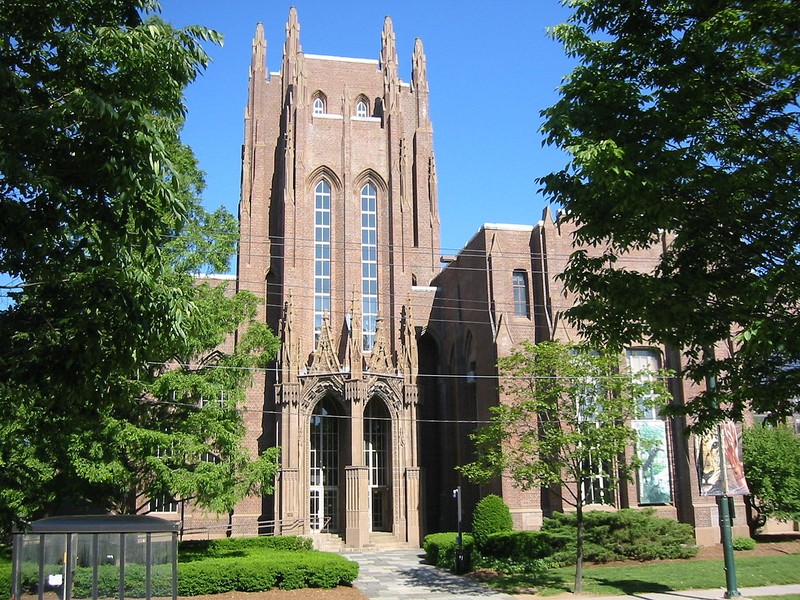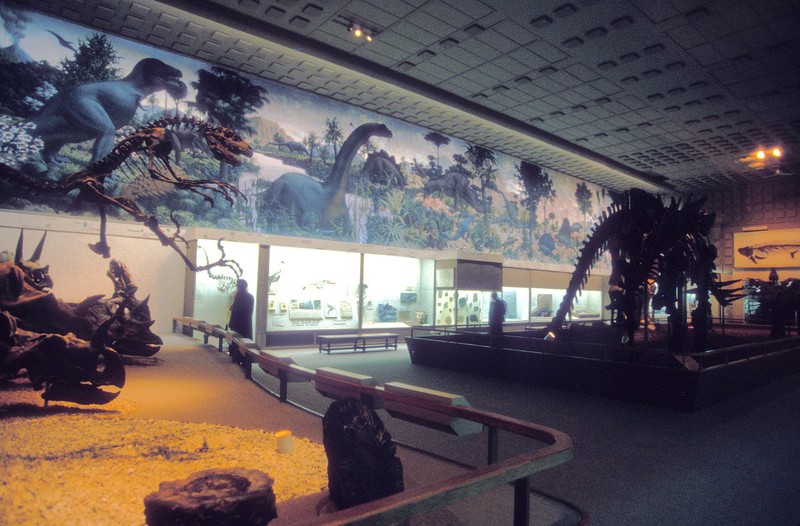Yale Peabody Museum of Natural History
Introduction
Text-to-speech Audio
Images
The museum was originally located on the corner of High and Elm Streets, but today can be found near the very heart of Yale University.

A view of the Great Hall of Dinosaurs

Backstory and Context
Text-to-speech Audio
Yale began acquiring collections in the 18th century but it wasn't until a professor of chemistry and natural history, Benjamin Silliman, started the process that systematic collecting began. His efforts established Yale as a preeminent center of scientific education. The first professor of paleontology in the United States (and second in the world), Mr. Othniel Charles Marsh, was appointed in 1866. Marsh had a massive collection of specimens, including bones and fossils, that he had collected over the years. In addition to his own finds, he commissioned others to head out west in search of a new scientific phenomenon – dinosaur bones. Marsh was one side of the “Bone Wars” of the nineteenth century, which pitted Marsh against scientist Edward Cope, to see who could find more dinosaur bones. Together, they discovered 136 new species of dinosaurs.
Plans and construction for the Yale Peabody Museum of Natural History began in 1866 after a generous donation by wealthy financier, George Peabody, who was also Professor Marsh’s uncle. Ten years later, constructed had been completed. The building is the home to some of the most important fossil collections in the world. It primarily housed Marsh’s own collection, some items obtained by other expeditions, and Silliman’s assortment of rocks and minerals. However, the first Peabody Museum eventually proved to be too small to house the growing natural history displays. The new museum opened in 1925 and underwent expansions in 1959 and 1963. Currently, the museum holds approximately 13 million specimens. The exhibits include all kinds of specimens from dinosaurs, birds and sea creatures to insects and examinations of life in other ancient cultures (i.e. the Egyptians).
The museum is more than simply an exhibition of scientific collections. The Peabody Museum hosts many programs for children throughout the school year as well as programs to attract diverse communities to the museum. It is a teaching and a research center for natural history.
Sources
Benjamin Silliman. Yale Peabody Museum of Natural History. Accessed September 06, 2017. http://peabody.yale.edu/collections/archives/biography/benjamin-silliman.
Logan, Alison M.B.. A Museum of Ideas: Evolution Education at the Peabody Museum during the 1920s. Yale Peabody Museum of Natural History. February 07, 2014. Accessed September 06, 2017. http://peabody.yale.edu/sites/default/files/documents/archives/ypm_Logan_essay.pdf.
Engaging Our Communities. Yale Peabody Museum of Natural History. Accessed September 06, 2017. http://peabody.yale.edu/sites/default/files/documents/about-us/ypmEOCproject.pdf.
